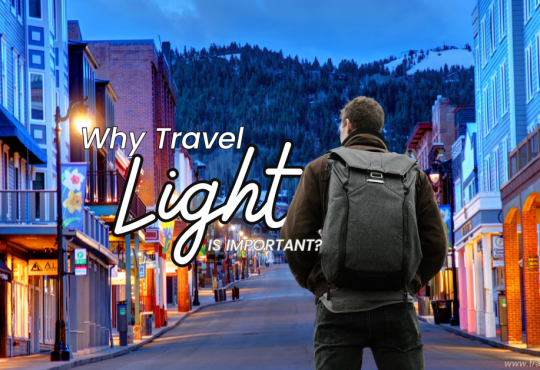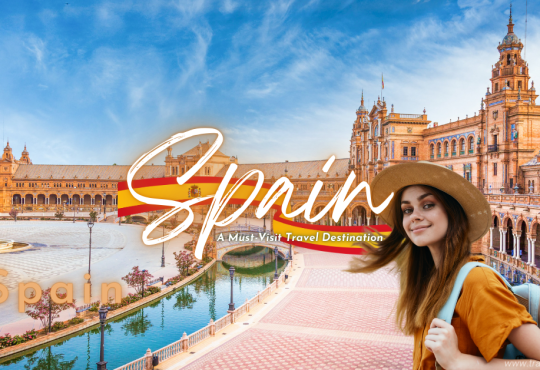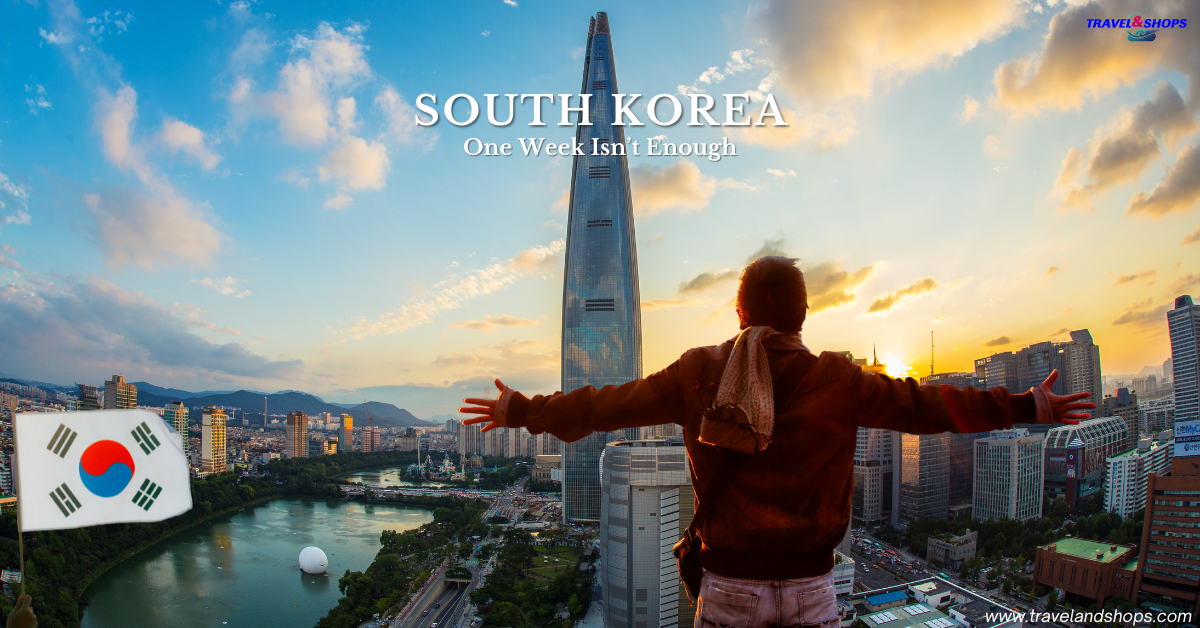
South Korea is an enchanting blend of old and new, tradition and technology, natural landscapes, and cutting-edge cityscapes. From bustling, high-tech metropolises to serene ancient temples tucked away in scenic mountains, South Korea’s cities offer an incredible variety of experiences that would impress any traveler. And here’s the truth—a single week simply isn’t enough to soak in all that South Korea has to offer.
This article will guide you through South Korea’s must-visit cities, highlighting the unique character and unmissable experiences each location brings to the table. As you read on, you’ll see why a seven-day trip, though packed with adventure, will leave you longing for more time to explore this vibrant, multifaceted country.
South Korea Must-Visit Cities—One Week Isn’t Enough
1. Seoul: The Beating Heart of South Korea (3 days)
Seoul, South Korea’s capital, is a vibrant metropolis where ancient palaces meet neon-lit skyscrapers, and traditional hanoks (Korean houses) blend seamlessly with luxury shopping malls and tech hubs. Known for its rich history, forward-thinking innovation, and endless energy, Seoul is a must-visit city that offers something for every traveler. Here’s a deeper look at why Seoul is truly the heart of South Korea and why even three days here won’t feel like enough.
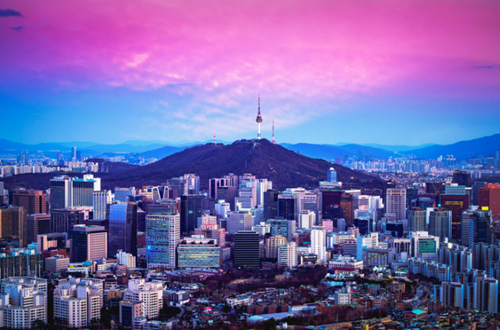
Top Attractions in Seoul
Seoul has an overwhelming amount of things to see and do, each experience revealing a new facet of the city. Here are a few of the most unmissable spots that will likely be the highlight of your trip:
- Gyeongbokgung Palace: Originally built in 1395, Gyeongbokgung is the grandest of Seoul’s Five Grand Palaces, and it’s a perfect starting point to explore Korean royal history. Be sure to catch the changing of the guard ceremony, held multiple times a day. The stunning architecture, traditional hanbok rental shops, and picturesque mountain backdrop make this a highlight for history lovers and photographers alike.
- Bukchon Hanok Village: A preserved village dating back over 600 years, Bukchon Hanok Village gives visitors a rare chance to see traditional Korean hanoks amid Seoul’s bustling cityscape. The area is filled with narrow lanes, artisan workshops, teahouses, and small museums. Many visitors rent hanbok (traditional clothing) to wander the streets and experience the village authentically, making for fantastic photos.
- Insadong: If you’re a fan of arts, crafts, and unique souvenirs, Insadong is the perfect place to explore. Known for its teahouses, antique stores, and galleries, this cultural district is ideal for finding handcrafted items and sampling traditional teas. Many stores offer “hands-on” experiences, from pottery-making to calligraphy, making Insadong an immersive experience.
- Myeongdong Shopping Street: For shopaholics and food lovers, Myeongdong is a dream come true. Known as the shopping mecca of Seoul, Myeongdong’s streets are filled with high-end boutiques, Korean cosmetics, and rows of street food vendors offering everything from spicy tteokbokki (rice cakes) to the famous korean-style hotdogs. For skincare enthusiasts, this area is a must, with countless stores offering face masks, serums, and more.
- N Seoul Tower (Namsan Tower): Perched atop Namsan Mountain, N Seoul Tower offers one of the best panoramic views of the entire city, especially at sunset. The tower has been a symbol of Seoul since 1980, and visitors flock here for its “Locks of Love” fence, where couples place padlocks as a symbol of their enduring love. Take the cable car or hike up for some rewarding cityscape views.
- Dongdaemun Design Plaza (DDP): Designed by the late architect Zaha Hadid, this futuristic building is an architectural icon of Seoul. DDP is both a fashion hub and a cultural space, hosting exhibits, concerts, and night markets. The building itself is stunning, especially when lit up at night, and the nearby Dongdaemun Night Market is an excellent spot to shop, eat, and enjoy the buzzing energy of the city.
Seoul is a paradise for travel and shops enthusiasts alike, offering everything from high-end fashion boutiques in Gangnam to traditional markets in Dongdaemun and Namdaemun. For travelers eager to experience Korea’s beauty industry, Myeongdong is a must-visit destination where countless shops offer the latest skincare and cosmetic trends. Those seeking a more refined travel experience can explore Garosu-gil Street in Sinsa-dong, known for its trendy boutiques and local designer brands nestled among stylish cafes with a European vibe.
Hidden Gems Worth Exploring
- Ihwa Mural Village: Just a short walk from the famous Dongdaemun area, Ihwa Mural Village is an artsy neighborhood where local artists have transformed walls, stairs, and alleys with vibrant murals and sculptures. It’s a quieter, lesser-known destination in Seoul and ideal for a more relaxed, scenic walk away from the crowds.
- Seochon Village and Tongin Market: Near Gyeongbokgung, Seochon Village is a charming area filled with cozy cafés, galleries, and Tongin Market, where you can create your own lunch box using traditional Korean coins as currency. It’s a unique and interactive way to sample different Korean dishes.
Why 3 Days Aren’t Enough in Seoul
Seoul is a city of contrasts, where you’ll encounter something new at every turn. Three days only allow time for Seoul’s most famous highlights, but each neighborhood has its own personality, charm, and history that deserves exploration. Here are some key reasons why you’ll wish you had more time:
- Diverse Neighborhoods: Each neighborhood, from Gangnam’s luxury boutiques to Hongdae’s vibrant youth culture, has its own distinct vibe and activities. Exploring these unique areas would easily take several days.
- Food Adventures: Korean cuisine is diverse and packed with unique flavors. From street food to traditional BBQ, each meal in Seoul is an experience. A longer stay means more opportunities to try local favorites like Korean barbecue, jjimdak (braised chicken), and jeon (savory pancakes) and experience the vibrant café culture in Itaewon or Garosugil.
- Cultural Activities: Seoul offers hands-on cultural activities, from kimchi-making workshops to traditional music performances at the National Theater of Korea. Taking part in these activities requires a bit more time, but they provide a deep understanding of Korean heritage.
- Nightlife and Entertainment: Seoul’s nightlife is world-renowned, with entertainment districts like Hongdae, Itaewon, and Gangnam brimming with trendy bars, nightclubs, and live music venues. Late nights and early mornings are part of Seoul’s charm, especially if you want to experience the city like a local.
Seoul is a city that rewards slow exploration and deserves more than just a few days to experience its energy, diversity, and cultural depth fully. From historic sites to modern wonders, it’s easy to see why the city leaves a lasting impression on those who visit.
2. Busan: The Coastal Charm and Cultural Hub (2 days)
Busan, South Korea’s second-largest city, is a unique blend of urban energy and natural beauty. Often referred to as the “summer capital” of South Korea, Busan attracts visitors with its scenic beaches, historical temples, vibrant markets, and, of course, its unbeatable seafood. Situated along the southeastern coast, Busan’s atmosphere is relaxed yet lively, making it a refreshing contrast to Seoul’s fast-paced city life. Here’s a deeper look at Busan’s unmissable spots and why two days just aren’t enough to explore it all.
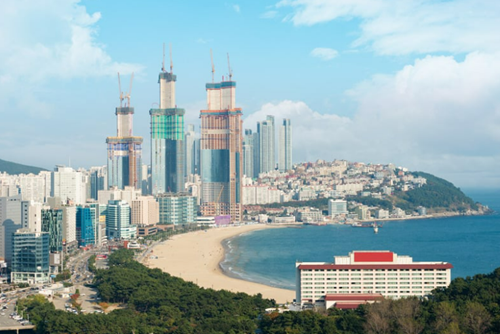
Top Attractions in Busan
Busan has plenty to offer, from picturesque coastlines to bustling cultural centers. Here’s a look at some of the must-see spots:
- Haeundae Beach: One of South Korea’s most famous beaches, Haeundae is a haven for beach lovers. Known for its long stretch of white sand and clear waters, it’s a popular spot for sunbathing, swimming, and water sports. During summer, Haeundae Beach becomes a lively hotspot with festivals, music events, and open-air food stalls lining the shore. Nearby, Haeundae Market offers street food and fresh seafood that’s a must-try.
- Gamcheon Culture Village: Nicknamed the “Santorini of South Korea,” Gamcheon Culture Village is a colorful hillside community with pastel-painted homes, art installations, murals, and quirky sculptures around every corner. Originally a refugee settlement, it’s now a thriving artist community with small shops, cafés, and galleries. Take your time to wander the narrow, winding alleys and enjoy the panoramic views of Busan’s port.
- Jagalchi Fish Market: As South Korea’s largest seafood market, Jagalchi is a paradise for seafood lovers. Located along the waterfront, it’s filled with rows of stalls selling freshly caught fish, shellfish, and other ocean delicacies. You can even select your seafood from the vendors and have it prepared for you at one of the nearby restaurants. The market is a true cultural experience, offering insight into Busan’s rich fishing heritage.
- Beomeosa Temple: Nestled on the slopes of Geumjeongsan Mountain, Beomeosa Temple is one of Korea’s most iconic temples. Dating back to the Silla Dynasty, this temple offers a peaceful retreat surrounded by lush nature and scenic mountain views. The temple grounds are beautiful year-round, but autumn is especially stunning when the foliage turns golden and red. Many visitors join the temple stay program to experience monastic life, meditation, and traditional tea ceremonies.
- Gwangalli Beach and Gwangan Bridge: Gwangalli Beach is another popular spot, known for its smooth sand and the stunning view of the Gwangan Bridge, especially at night when the bridge lights up in colorful displays. The area around Gwangalli is full of cafés, bars, and restaurants, making it a fantastic spot for nightlife with a view. Locals and tourists alike enjoy strolling along the beach or enjoying a meal with the illuminated bridge as a backdrop.
Hidden Gems Worth Exploring
- Oryukdo Skywalk: For a thrilling experience, head to Oryukdo Skywalk, a glass-bottom walkway that offers breathtaking views of the ocean beneath. Suspended above the sea, this skywalk gives the sensation of walking on air and provides incredible photo opportunities with the waves crashing below.
- Dongbaekseom Island: Located near Haeundae Beach, this small island offers scenic coastal walking paths, statues, and the beautiful Nurimaru APEC House, which hosted the 2005 APEC summit. It’s a peaceful area to enjoy a leisurely walk and stunning ocean views.
- Busan Cinema Center: Home to the Busan International Film Festival (BIFF), the Busan Cinema Center is an architectural marvel with its sprawling LED roof that lights up at night. The center hosts screenings, film-related events, and performances throughout the year, making it a fantastic spot for movie buffs and architecture lovers alike.
Why 2 Days in Busan Aren’t Enough
With its blend of cultural landmarks, vibrant city life, and natural wonders, Busan is more than a simple beach town – it’s a city that offers diverse experiences for all types of travelers. Here are some reasons why two days just scratch the surface of what Busan has to offer:
- Diverse Activities and Attractions: From soaking up the sun at beaches to exploring historical temples and visiting art villages, Busan’s attractions are varied, and each area requires time to fully enjoy. Haeundae Beach, Gwangalli Beach, and Gamcheon Culture Village each deserve at least half a day on their own, and that’s without factoring in places like Beomeosa Temple or the bustling Jagalchi Market.
- Seafood and Culinary Experiences: Known as the seafood capital of South Korea, Busan’s culinary scene is hard to beat. Beyond Jagalchi Fish Market, the city’s streets are lined with local delicacies like dwaeji gukbap (pork and rice soup) and milmyeon (cold wheat noodles). Exploring Busan’s food scene could easily take days, especially if you plan to try various restaurants, street food, and the iconic seaside seafood stalls.
- Festivals and Seasonal Events: Busan hosts numerous festivals, from the Busan International Film Festival (BIFF) in October to the Busan Fireworks Festival and the Haeundae Sand Festival in summer. Experiencing these events adds another layer to any trip but often requires extended time to attend and explore surrounding areas.
- Island Hopping and Day Trips: Busan’s coastal location makes it a fantastic jumping-off point for day trips to surrounding islands, like Geojedo Island or Tongyeong. Each island offers its own scenic hiking trails, fishing villages, and hidden beaches that are perfect for outdoor enthusiasts and those wanting to escape the city buzz.
- Nightlife and Entertainment: Busan’s nightlife is as lively as Seoul’s, especially around Gwangalli Beach, Seomyeon, and Haeundae. The area is full of rooftop bars, karaoke lounges, and live music venues where locals and tourists gather to unwind. Staying longer gives you a chance to experience both day and nighttime aspects of this dynamic city.
With all that Busan has to offer, two days provide only a snapshot of its coastal charm, delicious food, and cultural richness. Whether you’re looking to relax on the beach, delve into the city’s history, or get adventurous with local seafood, Busan invites you to slow down, explore, and enjoy the best of South Korean coastal life.
3. Jeonju: The Traditional Food Capital (1 day)
Jeonju, a city located in the heart of South Korea, is widely recognized as the culinary capital of traditional Korean cuisine. Known for its vibrant food scene and dedication to preserving traditional culture, Jeonju attracts food enthusiasts from all over the world who come to experience its rich flavors, historic sites, and unique cultural experiences. It’s a city where you can truly immerse yourself in Korea’s culinary heritage and step back in time through its architecture, crafts, and traditions.
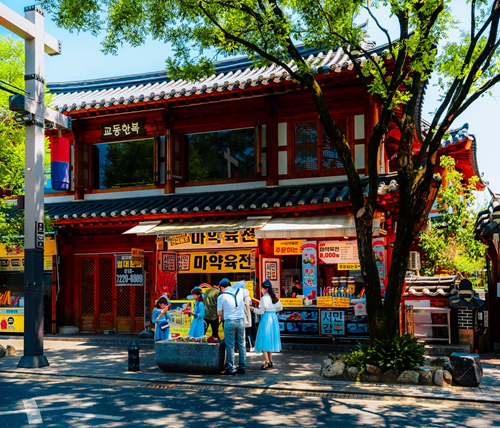
Top Attractions in Jeonju
While Jeonju’s food is its primary draw, the city also boasts plenty of historic and cultural attractions that provide a deeper understanding of Korean heritage. Here are some unmissable spots that make Jeonju a top destination:
- Jeonju Hanok Village: This iconic village, featuring over 800 traditional Korean hanok houses, is one of the most picturesque sites in South Korea. Wandering through the cobblestone streets lined with hanoks offers a glimpse into traditional Korean architecture. Many hanoks are now used as cafés, guesthouses, restaurants, and artisan shops, allowing you to enjoy tea, stay overnight, or browse handmade goods. The village is especially beautiful in the evening when the lights cast a warm glow over the wooden structures.
- Gyeonggijeon Shrine: Located within Jeonju Hanok Village, this historic shrine is dedicated to King Taejo, the founder of the Joseon Dynasty. It’s famous for its ancient red gates, traditional buildings, and serene atmosphere, as well as its collection of portraits of Joseon kings. The surrounding area offers scenic views and is ideal for a peaceful stroll or photoshoot in traditional hanbok clothing, which many visitors rent while exploring the village.
- Jeonju Nambu Market: This bustling market is a fantastic place to experience the energy of Jeonju’s food culture. The market is divided into different sections, with street food stalls, produce stands, and an entire “night market” area that comes alive in the evening. Here, you can try some of Jeonju’s signature dishes, including variations of bibimbap and hotteok (filled pancakes). Don’t miss the market’s “youth mall” area, where young entrepreneurs sell trendy snacks, crafts, and clothes.
- Jeondong Catholic Cathedral: Built in 1914, Jeondong Cathedral is one of Korea’s oldest and most beautiful Romanesque-style churches. Its unique architecture, with a mix of Eastern and Western influences, makes it a significant landmark in Jeonju. The cathedral is a popular spot for photography, and its peaceful atmosphere offers a quiet contrast to the bustling streets of Hanok Village.
Jeonju’s Must-Try Dishes
Jeonju’s food culture is deeply rooted in tradition, with many dishes originating here and passed down through generations. Here are some of the must-try foods that make Jeonju the culinary heart of South Korea:
- Jeonju Bibimbap: Arguably the most famous Korean dish originating from Jeonju, bibimbap (meaning “mixed rice”) is a colorful bowl of rice topped with an assortment of vegetables, marinated beef, egg, and gochujang (red chili paste). Jeonju’s bibimbap is known for its emphasis on high-quality ingredients and distinct presentation, often incorporating a raw egg yolk and regional vegetables like sprouts and mushrooms. It’s a flavorful, nutritious, and visually stunning dish that captures the essence of Korean food culture.
- Kongnamul Gukbap (Soybean Sprout Soup with Rice): This comforting soup is a Jeonju specialty and a popular dish among locals. Made with soybean sprouts, rice, kimchi, and a spicy broth, kongnamul gukbap is especially popular as a hangover cure. Many restaurants in Jeonju specialize in this dish, where it’s served with a small portion of rice mixed directly into the broth, making it hearty and filling.
- Makgeolli (Traditional Korean Rice Wine): Jeonju is known for its makgeolli, a slightly sweet and fizzy rice wine traditionally served in brass kettles with a variety of side dishes, called “anju.” Jeonju’s makgeolli houses provide a unique experience, where each kettle of makgeolli is accompanied by a spread of complimentary side dishes, which often include pancakes, spicy stews, and grilled fish. It’s a social experience and a perfect way to enjoy Korean food in a relaxed, communal setting.
- Choco Pies from PNB Bakery: A surprising but popular treat, Jeonju is famous for its locally made choco pies from PNB Bakery, which have been a beloved dessert here since 1951. These choco pies feature a soft marshmallow center sandwiched between two layers of chocolate cake, then covered in a rich chocolate coating. They’re a sweet souvenir that many visitors take back home as a reminder of their time in Jeonju.
Why a Day in Jeonju Isn’t Enough
Jeonju’s culinary richness and cultural depth make it a city that’s hard to experience in just one day. Here’s why you’ll wish you had more time in Jeonju:
- Diverse Food Experiences: From traditional restaurants to bustling markets, each area in Jeonju offers unique culinary experiences. Whether it’s sampling dishes at Nambu Market, enjoying bibimbap at a heritage restaurant, or savoring makgeolli with locals, each meal is an experience of its own, and it takes time to truly appreciate them all.
- Rich Cultural Heritage: Jeonju Hanok Village and Gyeonggijeon Shrine are just the beginning of the city’s cultural offerings. With each step, you can feel the history and tradition, making it an ideal place for slow exploration. Taking time to visit the local museums, artisan workshops, and historic landmarks offers a fuller understanding of Korean culture that goes beyond food.
- Hands-On Experiences: In Jeonju, many opportunities exist for interactive activities like learning traditional crafts, making bibimbap, or participating in tea ceremonies. These hands-on experiences provide insight into Korean traditions, but they often require pre-booking and can take a few hours to fully enjoy.
- Seasonal Festivals and Events: Jeonju is known for its festivals, including the Jeonju Bibimbap Festival and the Jeonju International Film Festival, which bring a festive atmosphere and highlight different aspects of Korean culture. If your visit aligns with one of these events, spending extra time allows you to fully experience the festivities and engage with the community.
- Scenic Walks and Photography: Jeonju’s traditional architecture and scenic spots are perfect for leisurely walks and photography. The beauty of Jeonju Hanok Village is best enjoyed at a slow pace, allowing you to appreciate the small details in the architecture and street scenes. Early mornings and late evenings offer quieter, more atmospheric views.
Jeonju is a city that invites visitors to savor each bite, cherish each sight, and connect with Korea’s history and traditions. Whether you’re a foodie, history buff, or simply looking to experience authentic Korean culture, Jeonju’s combination of culinary excellence and cultural richness makes it a truly unique destination.
4. Gyeongju: The Museum Without Walls (2 days)
Known as South Korea’s ancient capital and often called “The Museum Without Walls,” Gyeongju is a city brimming with historical treasures. Once the capital of the Silla Kingdom (57 BC–935 AD), one of the longest-ruling dynasties in Korean history, Gyeongju is home to an astonishing array of cultural relics, temples, royal tombs, and artifacts. The entire city feels like an open-air museum, making it a paradise for history lovers and those fascinated by Korea’s past.
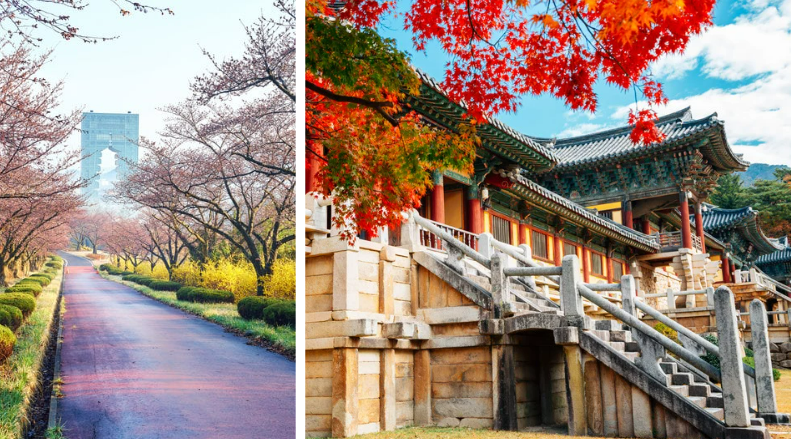
Top Historical Sites in Gyeongju
Gyeongju’s unique landscape is dotted with cultural sites that showcase the city’s thousand-year history. Here are some essential landmarks that should be on any visitor’s list:
- Bulguksa Temple: A UNESCO World Heritage site, Bulguksa Temple is perhaps Gyeongju’s most famous landmark. Originally constructed in the 8th century during the height of the Silla Dynasty, Bulguksa is an architectural masterpiece that reflects ancient Buddhist beliefs. The temple complex is known for its intricate stonework, colorful pagodas, and serene surroundings. Notably, it houses two of Korea’s National Treasures: the Seokgatap and Dabotap pagodas, each with unique designs that symbolize Buddhist teachings.
- Seokguram Grotto: Located on the slopes of Mount Tohamsan near Bulguksa, Seokguram Grotto is a beautiful stone temple with a massive Buddha statue carved from granite. The grotto, also a UNESCO site, is considered a masterpiece of Buddhist art and architecture. Visiting Seokguram offers a peaceful experience, as the quiet mountain setting and breathtaking views add to the spiritual atmosphere. A visit to the grotto is a pilgrimage in itself, giving insight into the religious devotion of the Silla people.
- Daereungwon Tomb Complex (Cheonmachong Tomb): This site is famous for its distinctive burial mounds, or tumuli, which contain the tombs of Silla royalty. The Cheonmachong Tomb, or “Heavenly Horse Tomb,” is open to the public and provides a rare chance to step inside a burial mound. Inside, visitors can see replicas of the ancient relics discovered there, including a golden crown and a saddle decorated with a painting of a winged horse, after which the tomb is named.
- Anapji Pond (Donggung Palace and Wolji Pond): Anapji Pond is a stunning, man-made pond that was once part of the Donggung Palace complex, a retreat for Silla royalty. The pond is designed with small islets and structures that blend beautifully with the water and surrounding gardens. At night, the reflections of the palace ruins and lit-up pagodas on the pond’s surface create a mesmerizing scene. This spot is a favorite for both locals and tourists, offering a glimpse into the elegance of Silla’s royal court.
- Cheomseongdae Observatory: Built in the 7th century, Cheomseongdae is one of the world’s oldest surviving astronomical observatories. This simple stone structure was used by Silla astronomers to study the stars and planets. It’s fascinating to imagine ancient scholars using this observatory for celestial studies, and the structure itself is symbolic, with its 27 stone layers thought to represent Queen Seondeok, the Silla’s 27th ruler.
Other Notable Attractions
While Gyeongju’s historical landmarks are its primary attractions, the city also offers natural beauty and cultural experiences that add depth to any visit:
- Gyeongju National Museum: This museum is a treasure trove of Silla artifacts, including golden crowns, pottery, statues, and weaponry. The museum provides an excellent context for understanding the significance of the ancient sites scattered around Gyeongju. The outdoor exhibits, which feature ancient stone pagodas and statues, add to the museum’s charm.
- Yangdong Folk Village: Recognized as a UNESCO World Heritage site, Yangdong Folk Village is a traditional Korean village that dates back over 500 years. The village has preserved its thatched-roof houses, Confucian academies, and ancestral shrines, offering a rare look at Joseon-era lifestyles. Yangdong is still inhabited, so visitors can witness residents going about their daily lives, which provides a fascinating contrast to the ancient tombs and temples nearby.
- Mount Namsan: Known as the “sacred mountain” of Gyeongju, Mount Namsan is dotted with hundreds of ancient Buddhist carvings, pagodas, and statues. Hiking trails lead visitors to these hidden relics, and the mountain itself offers stunning views of Gyeongju. The combination of natural beauty and historical sites makes Mount Namsan a must-see for those who enjoy outdoor adventures combined with cultural exploration.
Why 2 Days in Gyeongju Isn’t Enough
Gyeongju’s nickname as “The Museum Without Walls” isn’t an exaggeration; it genuinely feels as though history surrounds you in every corner of the city. Here’s why two days barely scratch the surface of what Gyeongju has to offer:
- Depth of History and Culture: Each site in Gyeongju holds profound historical significance, and rushing through them doesn’t do justice to their beauty and importance. Whether it’s learning about the Silla dynasty at Bulguksa Temple or exploring the artifacts at Gyeongju National Museum, understanding the significance of each landmark takes time.
- Spiritual and Reflective Atmosphere: Many of Gyeongju’s sites, like Seokguram Grotto and Bulguksa Temple, have a peaceful, meditative quality. Taking your time to walk through these spaces allows for a more personal connection and appreciation, especially for those interested in Buddhism or ancient Korean culture.
- Seasonal Beauty and Landscape: Gyeongju’s natural surroundings change dramatically with the seasons, adding to the allure of its historic sites. In spring, cherry blossoms frame the ancient tombs and pagodas, while autumn brings vibrant foliage that makes locations like Bulguksa and Anapji Pond even more picturesque. Each season offers a different experience, and staying longer lets you explore both indoor exhibits and outdoor landscapes.
- Historical Complexity and Layers: The sheer volume of historical sites makes it difficult to fully explore Gyeongju in a short time. Each site, whether a tomb, temple, or palace, is layered with centuries of history and meaning. For example, a visit to the Daereungwon Tomb Complex can be deepened by exploring other lesser-known tombs nearby, which offer unique insights into Silla burial customs and traditions.
- Cultural Experiences and Local Life: Gyeongju isn’t only about ancient history; it also has a thriving community and cultural life. The city hosts several festivals celebrating its heritage, including the Silla Cultural Festival. Additionally, Gyeongju’s traditional markets, where you can sample local snacks like Hwangnam bread (a red bean-filled pastry) and explore handicrafts, offer a modern contrast to its historical sites.
Sample Itinerary Highlights for Extended Stay
To help make the most of your time in Gyeongju, here’s a quick look at a few must-see activities for a more extended visit:
- Day 1 – Historic Sites Tour: Visit Bulguksa Temple and Seokguram Grotto in the morning, then explore the Daereungwon Tomb Complex and Cheomseongdae Observatory. Conclude with a peaceful evening at Anapji Pond.
- Day 2 – Cultural Immersion: Start with a visit to the Gyeongju National Museum, followed by a trip to Yangdong Folk Village. In the late afternoon, hike Mount Namsan to see ancient carvings and enjoy panoramic views of the city.
- Day 3 – Local Experiences: Discover Gyeongju’s traditional markets, savor local snacks, and take a slow walk through the streets of the historic downtown area, stopping at shops, cafés, and lesser-known temples for a more intimate experience.
Gyeongju, with its endless cultural wealth and scenic beauty, offers a unique glimpse into Korea’s ancient past. Whether you’re captivated by the Silla Dynasty’s historical sites, the peaceful atmosphere of Buddhist temples, or the city’s beautiful landscapes, Gyeongju is a place that encourages you to slow down, explore, and uncover layers of Korean heritage at every turn.
5. Incheon: The Gateway City (1 day)
Incheon is South Korea’s bustling gateway to the world, often the first stop for international travelers due to its world-class Incheon International Airport. But there’s much more to Incheon than just a transit hub. As a city with a unique blend of modernity, history, and culture, Incheon has transformed into a dynamic destination that offers everything from futuristic cityscapes to scenic islands and historical sites. Located just west of Seoul, Incheon’s coastal charm, cultural diversity, and vibrant food scene make it a must-visit for anyone traveling to South Korea.
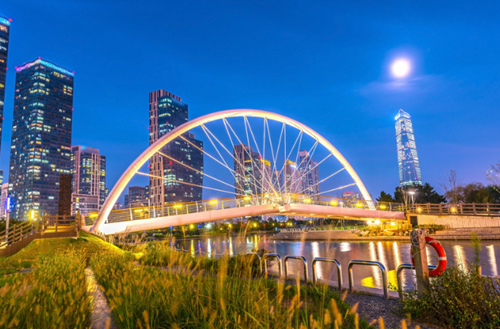
Top Attractions in Incheon
Incheon offers an array of activities and sights, from high-tech urban developments to preserved historical districts. Here are some of the city’s highlights:
- Incheon Chinatown: The only official Chinatown in South Korea, Incheon’s Chinatown was established in 1883, alongside the opening of the port. Today, it’s a lively cultural district filled with red lanterns, colorful murals, and traditional Chinese architecture. Visitors can sample authentic Chinese-Korean fusion dishes like jjajangmyeon (black bean noodles) and tangsuyuk (sweet and sour pork), which originated here. The neighborhood is also home to historical sites, such as Jjajangmyeon Museum, dedicated to the famous noodle dish, and the colorful murals of Samgukji Mural Street, which depict scenes from the Chinese classic Romance of the Three Kingdoms.
- Songdo International Business District: Songdo is a planned “smart city” and eco-friendly urban area that has become a symbol of modern South Korea. Designed with sustainability in mind, Songdo features cutting-edge architecture, high-tech infrastructure, and scenic green spaces like Central Park, where you can take a relaxing boat ride or explore walking paths. Songdo’s Global University Campus and convention centers make it a hub for international students, business professionals, and tourists alike. The area’s futuristic vibe makes it a must-see for those interested in city planning and technological innovation.
- Wolmido Island: Just a short drive from Incheon’s main areas, Wolmido Island is a popular entertainment and leisure spot, known for its boardwalk, seaside amusement park, and beautiful views of the West Sea. The Wolmi Theme Park offers thrilling rides and family-friendly attractions, while the Wolmi Culture Street is lined with cafés, seafood restaurants, and street performers. Wolmido is especially popular at sunset when the boardwalk is illuminated by the evening glow, creating a perfect seaside atmosphere.
- Gyeongin Ara Waterway: Connecting the Han River in Seoul to the Yellow Sea, the Gyeongin Ara Waterway is a scenic canal popular with outdoor enthusiasts. Visitors can walk, cycle, or even kayak along the waterway’s dedicated paths. The Ara Maru Skywalk, a transparent glass bridge over the waterway, offers panoramic views of the surrounding area and is a thrilling spot for photos. Seasonal flowers and art installations along the canal also add to the picturesque experience.
- Incheon Grand Park: This vast urban park is one of the largest green spaces in the region, with beautiful gardens, lakes, and walking trails set against a mountain backdrop. Incheon Grand Park is a great place for families and nature lovers, offering a zoo, botanical garden, and various sports facilities. It’s especially popular during spring cherry blossom season and autumn when the leaves turn vibrant shades of red and yellow.
Cultural and Historical Highlights
Beyond its urban attractions, Incheon holds historical and cultural significance as a port city that has witnessed waves of change over the centuries. Here are some historical sites and cultural experiences that offer insight into Incheon’s heritage:
- Incheon Landing Operation Memorial Hall: Dedicated to the famous Incheon Landing led by General Douglas MacArthur during the Korean War, this memorial hall commemorates one of the most critical moments in Korean history. The exhibit includes displays on the strategic planning, challenges, and impact of the landing, making it a meaningful stop for those interested in Korean and military history.
- Jemulpo Club and Incheon Open Port Museum: The Jemulpo Club, a historical Western-style building, was once a social hub for foreign traders in the early 20th century. Nearby, the Incheon Open Port Museum chronicles the history of Incheon as an open port city. These sites are part of the larger Open Port Area, where visitors can walk through streets lined with historic buildings and learn about Korea’s trade history and interactions with foreign powers.
- Traditional Korean Markets: Incheon’s traditional markets, such as Sinpo International Market and Sorae Fish Market, are a must-visit for foodies and anyone interested in local culture. Sinpo Market, for instance, is famous for its dakgangjeong (sweet and spicy fried chicken), while Sorae Fish Market is known for its fresh seafood, including octopus, squid, and a variety of fish. These markets offer a glimpse into everyday Korean life and culinary traditions and are great spots to try affordable, authentic street food.
Island Hopping and Coastal Exploration
Incheon’s coastal location makes it a fantastic jumping-off point for exploring some of South Korea’s most beautiful islands, each offering unique experiences:
- Ganghwa Island: Located just a short drive from Incheon, Ganghwa Island is rich in natural beauty and history. It’s home to ancient dolmens (stone tombs) that date back thousands of years and have been designated as a UNESCO World Heritage site. Visitors can also explore Gwangseongbo Fortress, a historical fort used to defend against foreign invasions, or hike Manisan Mountain for panoramic views of the West Sea.
- Muuido Island: Known for its beautiful beaches, Muuido Island is a popular weekend getaway for locals and tourists alike. The island’s two main beaches, Hanagae and Silmi, are ideal for beach activities, camping, and coastal hikes. The Muuido Skywalk offers stunning views of the island and surrounding waters. For a unique experience, visitors can stay in small huts right on the beach, allowing them to fall asleep to the sound of the waves.
- Deokjeokdo Island: A little further off the coast, Deokjeokdo Island is an oasis of natural beauty with sandy beaches, pine forests, and rugged mountain landscapes. This island is perfect for hiking and relaxing by the beach, especially at Seopori Beach, known for its soft sand and crystal-clear waters. Deokjeokdo is a bit quieter than other islands, making it an ideal retreat for those looking to escape the city.
Why One Day in Incheon Isn’t Enough
Incheon’s blend of history, culture, modern attractions, and natural beauty makes it impossible to fully experience in just one day. Here’s why you’ll want to plan for an extended stay:
- Diverse Cultural Experiences: Incheon offers a unique mix of Korean and international cultures, especially in areas like Chinatown and the Open Port Area. Each neighborhood has its own character and historical significance, so taking the time to explore these areas allows you to understand Incheon’s multicultural heritage more deeply.
- Dynamic Urban and Natural Landscapes: From the futuristic Songdo District to the scenic coastal areas, Incheon’s diversity of landscapes requires more time to explore. Spending extra time allows you to visit both urban attractions, like Songdo Central Park, and natural spots, like Wolmido Island and Incheon Grand Park.
- Island Adventures: Incheon’s access to various islands offers incredible day-trip or overnight possibilities. With each island providing unique experiences—such as Ganghwa’s historical sites, Muuido’s beaches, and Deokjeokdo’s hiking trails—exploring Incheon’s islands can easily fill several days and create unforgettable memories.
- Food and Market Exploration: Incheon’s culinary scene is a highlight, with traditional markets like Sinpo Market and seafood havens like Sorae Fish Market offering mouthwatering dishes and unique flavors. Taking your time to explore these markets lets you sample a wide range of local specialties and street foods, adding to the richness of your visit.
- Nighttime Attractions and Views: Incheon comes alive at night with illuminated cityscapes in Songdo and waterfront views on Wolmido’s boardwalk. Visiting these spots in the evening offers a different perspective on the city’s vibrant atmosphere and is a perfect way to end each day with a memorable view of Incheon’s skyline or the calm waves of the West Sea.
Incheon’s role as both a modern metropolis and a historic gateway makes it a captivating destination that showcases Korea’s past, present, and future. For those willing to look beyond the airport, Incheon offers a rich tapestry of experiences that can’t be fully enjoyed in just a day, making it an essential stop for anyone seeking to explore South Korea’s diverse landscapes and culture.
South Korea’s Cities Offer More Than Meets the Eye
Every city in South Korea offers a unique experience that showcases a different aspect of Korean culture and history. With Seoul’s fast-paced urban life, Busan’s beachy charm, Jeonju’s culinary excellence, Gyeongju’s historical depth, and Incheon’s diverse attractions, each city is a destination in its own right. Seven days might seem like a long time, but when spread out across such diverse cities, it quickly feels insufficient. Each stop has its own attractions that would take more time to savor fully.
If you plan on exploring South Korea’s must-visit cities, be prepared to leave with a deepened appreciation for its culture and a promise to return for more. This is a country with endless layers, from its bustling cities to its tranquil temples, just waiting to be discovered.




